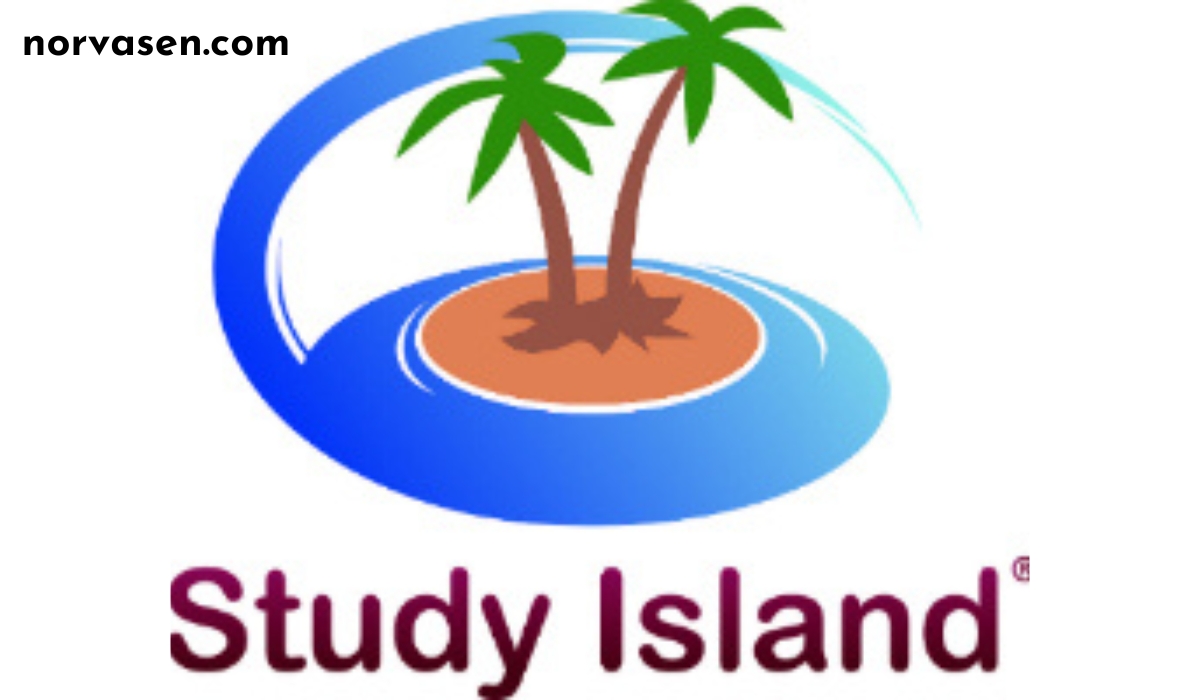Education
Mastering K-12 Education with Edmentum’s Study Island

Introduction: A New Horizon in K-12 Education
In the ever-evolving landscape of K-12 education, teachers seek tools that not only engage students but also bolster learning outcomes. Enter Edmentum’s Study Island, a comprehensive online learning platform meticulously designed to align with state standards and cater to the diverse needs of students and educators alike. This blog post aims to unveil the numerous facets of Study Island, demonstrating how it supports student learning, monitors progress, and prepares learners for standardized tests. By the end of this read, educators will understand the value Study Island can bring to their classrooms and discover actionable insights to enhance teaching and learning experiences.
Overview of Edmentum’s Study Island
What is Edmentum’s Study Island?
Edmentum’s Study Island is a dynamic K-12 online learning platform that equips educators with practice activities, formative assessments, and test preparation materials. The platform aligns with state standards across core subjects such as math, English Language Arts (ELA), science, and social studies. Designed to support both in-class and remote learning environments, Study Island offers personalized learning experiences that cater to the individual needs of students.
Key Benefits
Study Island offers a plethora of benefits that make it a valuable asset in modern education:
- Engaging Activities: From interactive games to customizable practice sessions, Study Island keeps students motivated and invested in their learning journey.
- Formative Assessments: Regular quizzes and activities allow teachers to gauge student understanding and adjust instruction accordingly.
- Standardized Test Preparation: Comprehensive test prep resources help students build confidence and achieve higher scores on standardized tests.
These benefits collectively enhance student learning outcomes and streamline the instructional process for educators.
Features of Edmentum’s Study Island
State-Aligned Practice
One of the standout features of Study Island is its state-aligned practice problems. The platform houses thousands of practic- questions that are meticulously crafted to align with specific state standards, ensuring that students receive relevant and targeted practice.
State-aligned practice enables teachers to:
- Target Weak Areas: Identify and focus on areas where students need the most improvement.
- Ensure Curriculum Relevance: Use practice activities that are directly tied to the curriculum standards of their state.
- Enhance Student Confidence: Provide students with familiar question formats and content, boosting their confidence as they face state assessments.
By aligning practice problems with state standards, Study Island ensures that students are not just learning but mastering the content required for their academic success.
Formative Assessments
Formative assessments are a crucial component of effective teaching and learning. Study Island offers a variety of quizzes and activities designed to regularly gauge student understanding and progress.
These assessments provide several advantages:
- Identify Learning Gaps: Teachers can quickly pinpoint areas where students struggle and adjust their instruction to address these gaps.
- Monitor Progress: Continuous assessment helps track student progress over time, allowing for timely interventions.
- Personalize Instruction: Formative assessment data enables teachers to tailor their instructional strategies to meet the needs of individual students.
By incorporating regular formative assessments, Study Island empowers teachers to create a responsive learning environment that adapts to the needs of their students.
Test Preparation
Standardized tests can be a significant source of stress for students. Study-Island eases this burden by offering comprehensive test preparation resources that build testing confidence and improve scores.
Key aspects of Study Island’s test prep include:
- Simulated Test Environments: Practice tests that mimic the format and timing of actual standardized tests, helping students become comfortable with the testing process.
- Focused Practice: Targeted exercises that hone in on the skills and knowledge required for specific standardized tests, such as the IAR and SAT.
- Performance Analytics: Detailed reports that track student performance on practice tests, highlighting areas of strength and weakness.
With Study Island’s robust test preparation tools, students can approach standardized tests with confidence and achieve their best possible scores.
Engaging Activities
Keeping students engaged in their learning is essential for academic success. Study-Island includes a variety of interactive elements designed to make learning fun and engaging.
Notable features include:
- Educational Games: Interactive games that reinforce key concepts and skills while keeping students entertained.
- Customizable Avatars: Students can create and customize their avatars, adding a personal touch to their learning experience.
- Reward Systems: Incentive-based rewards that motivate students to complete activities and achieve their learning goals.
These engaging activities not only make learning enjoyable but also help students retain information more effectively.
Benefits for Teachers
Flexibility
Study-Island offers unparalleled flexibility, allowing teachers to customize learning paths based on the individual needs of their students. This adaptability ensures that all students receive the support they need to succeed.
Teachers can:
- Create Custom Assignments: Design assignments tailored to the specific learning objectives and needs of their students.
- Adjust Difficulty Levels: Modify the difficulty of practice problems to match the skill levels of their students.
- Integrate with Curriculum: Seamlessly integrate Study Island’s resources with the existing curriculum, enhancing the overall instructional program.
The flexibility provided by Study-Island allows teachers to create a personalized learning experience that meets the unique needs of each student.
Data-Driven Instruction
In today’s data-driven world, having access to real-time data is crucial for effective teaching. Study-Island provides comprehensive assessment data that informs teaching decisions and improves instructional outcomes.
Data-driven instruction benefits include:
- Informed Decision-Making: Teachers can use assessment data to make informed decisions about their instructional strategies and interventions.
- Timely Interventions: Real-time data allows teachers to identify struggling students and provide timely support to address their needs.
- Continuous Improvement: Ongoing analysis of assessment data helps teachers refine their instructional practices and improve student outcomes.
By leveraging data-driven instruction, teachers can ensure that their teaching is both effective and responsive to the needs of their students.
Monitor Progress
Tracking student progress is essential for ensuring academic success. Study Island’s advanced reporting tools enable teachers to monitor student progress over time and identify areas for improvement.
The ability to monitor progress offers several advantages:
- Track Growth: Teachers can track student growth and development across various subjects and skills, ensuring that students are making steady progress.
- Identify Trends: Detailed reports help teachers identify trends and patterns in student performance, guiding instructional adjustments.
- Celebrate Achievements: Teachers can celebrate student achievements and milestones, fostering a positive and motivating learning environment.
By providing tools to monitor progress, Study Island empowers teachers to support their students’ academic growth effectively.
Save Time
Teaching is a demanding profession that often leaves little time for lesson planning and resource creation. Study Island offers ready-made materials that reduce lesson planning time and allow teachers to focus on what matters most—teaching.
Time-saving features include:
- Pre-Made Assignments: A vast library of pre-made assignments and practice activities that teachers can use immediately.
- Automated Grading: Automatic grading of assessments, freeing up valuable time for teachers to focus on instruction.
- Resource Sharing: Easily shareable resources that facilitate collaboration among teachers, enhancing the overall instructional program.
By saving time on lesson planning and grading, Study Island allows teachers to dedicate more time to delivering high-quality instruction.
Benefits for Students
Personalized Learning
Every student has unique learning needs and preferences. Study Island’s personalized learning approach ensures that students receive the support they need to succeed.
Personalized learning benefits include:
- Targeted Practice: Students can focus on areas where they need the most help, improving their overall understanding and mastery of the subject.
- Adaptive Learning Paths: Study Island adapts to each student’s learning pace and progress, providing a customized learning experience.
- Student Agency: Personalized learning empowers students to take control of their learning journey, fostering a sense of ownership and motivation.
By offering personalized learning experiences, Study Island helps students achieve their full potential.
Engaging Practice
Engagement is key to effective learning. Study Island’s interactive and engaging practice activities keep students motivated and invested in their education.
Engaging practice benefits include:
- Interactive Elements: Games, puzzles, and other interactive elements that make learning fun and enjoyable.
- Real-World Applications: Practice problems that relate to real-world scenarios, helping students see the relevance of their learning.
- Immediate Feedback: Instant feedback on practice problems, allowing students to learn from their mistakes and improve their performance.
By making practice activities engaging and interactive, Study Island enhances student learning outcomes.
Test Preparation
Standardized tests are a critical component of the educational journey. Study Island’s comprehensive test preparation resources help students build confidence and improve their test scores.
Test preparation benefits include:
- Practice Tests: Simulated practice tests that replicate the format and timing of actual standardized tests.
- Skill-Building Exercises: Targeted exercises that focus on the skills and knowledge required for specific standardized tests.
- Performance Analytics: Detailed reports that provide insights into student performance, helping them identify areas for improvement.
By providing robust test preparation resources, Study Island ensures that students are well-prepared for standardized tests.
Immediate Feedback
Feedback is essential for effective learning. Study Island provides immediate feedback on practice problems and assessments, helping students understand their progress and areas for improvement.
Immediate feedback benefits include:
- Reinforce Learning: Instant feedback helps reinforce learning and ensures that students understand key concepts.
- Identify Mistakes: Immediate feedback allows students to identify and correct mistakes, improving their overall understanding.
- Motivation: Positive feedback and reinforcement motivate students to continue their learning journey and strive for excellence.
By offering immediate feedback, Study Island supports continuous learning and improvement.
YOU MAY ALSO LIKE
Transform Your Classroom with Quizizz: A Fun and Engaging Learning Platform for Teachers
Conclusion: The Future of K-12 Education with Study Island
Edmentum’s Study Island is more than just an online learning platform; it is a comprehensive solution that addresses the diverse needs of K-12 educators and students. By aligning with state standards, providing engaging activities, and offering robust assessment and test preparation resources, Study Island empowers educators to deliver high-quality instruction and supports students in achieving academic success.
For educators looking to enhance their teaching practices and improve student outcomes, Study Island offers a valuable toolkit that is both flexible and effective. By embracing this innovative platform, educators can create a dynamic and responsive learning environment that meets the needs of all students.
As we look to the future, the integration of technology in education will continue to play a pivotal role in shaping the learning experiences of students. Edmentum’s Study Island stands at the forefront of this transformation, offering a powerful and versatile solution that bridges the gap between traditional and digital learning.
In conclusion, Edmentum’s Study Island is a game-changer for K-12 education. Its state-aligned practice, formative assessments, test preparation resources, and engaging activities make it an indispensable tool for educators and students alike. By embracing Study Island, educators can unlock new possibilities for teaching and learning, paving the way for a brighter and more successful future for their students.
If you’re ready to take your teaching to the next level and provide your students with the tools they need to succeed, explore the full potential of Study Island today. With its comprehensive features and proven benefits, Study Island is the key to unlocking academic excellence in the K-12 classroom.
Frequently Asked Questions (FAQs)
- What is Study Island?
Study Island is an online learning platform designed to help K-12 students achieve academic success through personalized learning, engaging practice activities, and comprehensive test preparation resources.
- How does Study Island support personalized learning?
Study Island utilizes adaptive learning paths, targeted practice, and student agency to tailor the learning experience to each student’s unique needs and preferences.
- What types of practice activities does Study Island offer?
Study Island provides interactive and engaging practice activities, including games, puzzles, and real-world problem scenarios, to keep students motivated and invested in their learning.
- How can Study Island help with test preparation?
Study Island offers practice tests, skill-building exercises, and performance analytics, which help students build confidence and improve their test scores for standardized tests.
- Why is immediate feedback important in Study Island?
Immediate feedback helps reinforce learning, enables students to identify and correct mistakes, and provides motivation through positive reinforcement, enhancing overall academic performance.
Education
Proving Loss of Motor Function in Bicycle Accident Injury Claims

Bicycle accidents can result in severe injuries, including the loss of motor function. Proving such a loss is crucial for victims seeking compensation through injury claims. Understanding the legal and medical aspects involved in these claims can help victims navigate the process effectively and secure the support they need for recovery.
For those affected by bicycle accidents, seeking assistance from a Las Vegas Bicycle accident lawyer can be crucial in navigating the legal complexities and securing appropriate compensation.
Defining Loss of Motor Function
Loss of motor function refers to the impairment or inability to perform normal movements due to nerve damage, spinal cord injuries, or severe musculoskeletal injuries. This loss can significantly impact a victim’s quality of life, affecting their ability to work, perform daily activities, and enjoy recreational pursuits. In the context of bicycle accidents, such injuries often result from direct trauma to the spine, head, or limbs. The loss of motor function can be partial or complete, and it can affect any part of the body, leading to long-term or permanent disability.
Victims of such injuries often face a drastic change in their lifestyle, requiring extensive rehabilitation and adaptive equipment to regain some level of independence. Continuous medical care and physical therapy become essential parts of their lives. The psychological impact is also profound, as the sudden loss of mobility and independence can lead to depression, anxiety, and a significant decrease in quality of life.
Collecting Comprehensive Medical Evidence
To substantiate a claim for loss of motor function, comprehensive medical evidence is essential. Here are the key components needed to build a strong case:
- Detailed Medical Records: Maintain thorough documentation of all medical treatments, including hospital records, doctor’s notes, and therapy sessions. These records provide a chronological account of the injury and its treatment.
- Diagnostic Tests: Undergo advanced imaging techniques such as MRIs or CT scans. These tests provide detailed views of the injured areas and help determine the extent of the impairment.
- Specialist Evaluations: Obtain thorough evaluations by neurologists, orthopedists, and other relevant medical professionals. These specialists can assess the injury’s impact on motor function and overall health.
- Functional Assessments: Document how the injury affects daily life through functional assessments. These assessments measure the range of motion, strength, and coordination, offering concrete evidence of the loss of function.
- Treatment Plans and Progress Reports: Keep detailed records of all treatment plans, medications, and progress reports. This documentation is crucial for outlining the necessary future medical needs and associated costs.
Establishing Negligence and Liability
Proving negligence is a critical component of any bicycle accident injury claim. Victims must demonstrate that another party’s failure to exercise reasonable care led to the accident and subsequent injury. This process involves gathering evidence such as police reports, eyewitness testimonies, and, if available, video footage of the incident.
Negligence can be established by showing that the responsible party violated traffic laws, such as failing to yield or running a red light, which directly caused the accident. It’s essential to connect these actions to the injuries sustained, highlighting how the negligent behavior resulted in the loss of motor function. A skilled attorney can help compile and present this evidence effectively, making a compelling case for liability and compensation.
Quantifying Impact on Daily Life
The loss of motor function can drastically alter a victim’s daily life. Simple tasks may become challenging or impossible, leading to a significant decline in quality of life. Victims may need to make home modifications, rely on assistive devices, or hire help for daily activities. Documenting these changes comprehensively is crucial when seeking compensation.
Personal testimonies from the victim, family members, and caregivers can provide powerful insights into the daily struggles and adjustments required. Additionally, video diaries or logs detailing the victim’s challenges can offer compelling evidence of the injury’s impact. This documentation helps to convey the severity of the loss and the ongoing need for support and adaptations, which are critical for justifying compensation claims.
Financial Implications and Compensation
The financial burden of losing motor function is considerable. Medical expenses, including surgeries, rehabilitation, and ongoing treatments, can quickly accumulate. Additionally, victims may face lost wages due to their inability to work, both in the short term and potentially long term, if they cannot return to their previous occupation. Calculating these financial impacts involves considering both current and future expenses.
Vocational experts can assess the victim’s ability to return to work and estimate future earning capacity, providing a comprehensive overview of the financial losses incurred due to the injury. Compensation claims must account for all these factors, ensuring that victims receive adequate financial support to cover medical bills, lost income, and necessary lifestyle adjustments. A thorough and detailed approach in presenting these costs is essential for a successful claim.
Role of Expert Witnesses
Expert witnesses are invaluable in proving claims involving loss of motor function. Medical experts can provide detailed reports and testify on the nature of the injury, the treatment required, and the long-term prognosis. Their expertise helps to validate the extent of the victim’s condition, offering authoritative support for the claims.
In addition to medical experts, vocational and economic experts can offer insights into the impact of the injury on the victim’s ability to work and earn a living. These experts can project future financial losses and the costs associated with ongoing care and support. Their testimonies can be instrumental in presenting a well-rounded and persuasive case for compensation, highlighting the far-reaching consequences of the injury.
Importance of Legal Representation
Navigating the complexities of a bicycle accident injury claim requires skilled legal representation. An attorney with experience in these cases can guide victims through the legal process, handle negotiations with insurance companies, and, if necessary, represent them in court. Their expertise ensures that victims’ rights are protected and that they receive the compensation they deserve.
A dedicated attorney can also provide emotional support during this challenging time, helping victims understand their options and make informed decisions. This support can make a significant difference in the outcome of the claim and the victim’s overall recovery process. By having a knowledgeable advocate on their side, victims can focus on healing while their legal team works to secure the best possible outcome for their case.
Education
Catastrophic Injury Attorneys: Learn How They Can Help

What happens when you or a loved one suffers a life-changing injury?
These injuries can be overwhelming, both physically and emotionally. That’s where catastrophic injury attorneys come in.
They specialize in helping you navigate the legal system after a severe accident. Their goal is to ensure you get the compensation you deserve.
From medical bills to lost wages, they handle it all. Knowing your rights and having the right legal support can make a huge difference. Read on to learn how these professionals can support you during tough times.
Comprehensive Case Evaluation
A catastrophic injury attorney will start with a thorough review of your case. They will look at medical records, accident reports, and other important documents.
This helps them understand the full impact of your personal injury. They will talk to you about your needs and goals.
With this information, the attorney can build a strong case to fight for your rights. They will explain your legal options and the best steps to take. This initial evaluation is key to getting the compensation you deserve.
Gathering Evidence
The next step involves collecting crucial evidence. Your attorney will gather medical records, eyewitness statements, and accident scene photos.
They might also consult experts who can provide professional opinions. This evidence builds a strong case by proving the extent of your injuries and the other party’s responsibility.
Clear, solid evidence is essential to winning your case and getting fair compensation for your suffering. Strong evidence makes your claim more credible and increases your chances of a successful outcome.
Negotiating with Insurance Companies
Insurance companies often try to pay as little as possible. Your attorney steps in to handle these tough negotiations. They know the tricks that insurance companies use.
With their experience, they fight for the best settlement for you. Their goal is to cover your medical bills, lost wages, and other expenses.
By using their legal services, you have a better chance of getting a fair deal. Remember, having a skilled attorney on your side makes all the difference during this critical time.
Litigation Support
If a fair settlement can’t be reached, your attorney will take the case to court. They will represent you in front of a judge and jury. Litigation support includes preparing all legal documents, presenting evidence, and arguing your case.
Domnick Cunningham & Yaffa personal injury lawyers, for example, have experience in handling complex cases. They will fight to get you the compensation you deserve.
Having knowledgeable attorneys is essential when facing a trial. They will guide you through each step and work hard to win your case.
Long-Term Financial Planning
Long-term financial planning is crucial after a catastrophic injury. Your attorney will help you plan for the future.
They will estimate future medical costs, rehabilitation fees, and everyday living expenses. This planning ensures you have enough money to cover all your needs.
Your attorney will work with financial experts to create a solid plan. They aim to relieve your financial stress so you can focus on recovery. Planning for the long term gives you peace of mind and helps secure your future.
Trust Experienced Catastrophic Injury Attorneys Today
Catastrophic injury attorneys play a vital role in securing your future after a life-changing accident. They fight for your rights, handle negotiations, and plan for long-term financial needs.
With their specialized knowledge and support, you can focus on healing while they work to get you the compensation you deserve. Trusting an experienced attorney can make a significant difference during these challenging times.
For more informative articles, please visit the rest of our blog.
Education
Drawing:cul23ybyzfm= Basketball Dreams on Canvas and Court

Basketball is more than just a sport; it’s an art form that captures the hearts of millions around the world. But what happens when the precision, creativity, and passion of basketball intersect with the world of drawing? This blog post explores the beautiful fusion between basketball and art, from court designs to digital sketches. If you’re a basketball enthusiast, an artist, or a sports blogger, this piece is for you. Let’s explore the captivating world where basketball and drawing come together.
Introduction Drawing:cul23ybyzfm= Basketball
The Intersection of Basketball and Art
Imagine a world where basketball courts are canvases and players are brushstrokes in a living painting. This isn’t an imaginary realm but a reality where basketball and art beautifully intersect. From detailed illustrations of iconic moments to graffiti that celebrates the sport’s culture, basketball has influenced the art world in profound ways.
The Importance of Drawing in Basketball Culture
Drawing plays a vital role in preserving and promoting basketball culture. Whether it’s through intricate sketches of legendary players or elaborate mural paintings of iconic game moments, art captures the essence of basketball. This blog will take you through various facets of this intersection, making a compelling case for why drawing is an essential element of basketball culture.
The Art of Basketball
Exploring Artistic Elements in Basketball
Basketball is a visually rich sport with an array of artistic elements. The design of team logos, for instance, often involves complex artistry. Think of the Chicago Bulls’ logo—a fierce bull that symbolizes strength and determination. Then there’s court art, another vital aspect. Have you seen the vibrant courts of Venice Beach or Rucker Park? These courts are more than playing surfaces; they’re visual masterpieces that capture the spirit of their communities.
The Influence of Basketball on Urban Art and Graffiti
Urban environments often use basketball as a theme in their artwork. Graffiti artists frequently create murals that celebrate local heroes or iconic moments in basketball history. These pieces not only beautify neighborhoods but also instill a sense of pride and identity among residents.
Jersey Design as Art
The jerseys worn by basketball players are another form of art. Designers meticulously plan each element, from color schemes to typography, to create uniforms that resonate with both players and fans. The goal is to craft jerseys that are not only functional but also aesthetically pleasing, making them coveted items in both the sports and fashion worlds.
Drawing Tutorials for Basketball Fans
How to Draw Popular Basketball Players
If you’ve ever wanted to capture the likeness of your favorite basketball player on paper, you’re in the right place. Here’s a simple step-by-step guide to drawing an iconic player like Michael Jordan:
- Outline the Head and Shoulders: Start with a basic circle for the head and add guidelines for facial features.
- Sketch Facial Features: Draw the eyes, nose, and mouth. Pay attention to distinctive features that make the player recognizable.
- Add Details and Clothing: Sketch in the details of the player’s jersey and other accessories.
- Final Touches: Add shading and texture to bring your drawing to life.
Tips for Sketching Basketball Scenes
Drawing action shots and dynamic scenes can be challenging but immensely rewarding. Here are some tips:
- Use Reference Photos: Look at photographs to understand the body’s movement during specific actions, like a slam dunk or a three-point shot.
- Capture the Movement: Use light, quick strokes to convey motion.
- Focus on Proportions: Ensure that the proportions of the players are accurate to make the scene realistic.
Creating Dynamic Action Shots
Action shots capture the energy and excitement of basketball. Here’s how to draw them effectively:
- Start with Basic Shapes: Use circles and lines to outline the figures.
- Add Muscle Definition: Sketch in the muscles to give the figures a sense of power and movement.
- Detail the Environment: Include elements like the basketball hoop, court lines, and audience to provide context.
Digital Art and Basketball
Introduction to Digital Drawing
Digital drawing has revolutionized the art world, making it easier than ever for artists to create and share their work. Digital tools offer a range of features that traditional mediums can’t, such as layers, undo functions, and various brush styles.
Digital Artists in the Basketball Community
Several digital artists have made names for themselves by focusing on basketball. Artists like @artbyedo and @kevinweaverart use digital platforms to create stunning pieces that capture the spirit of the game. Their works often go viral, attracting attention from both art lovers and basketball fans.
Tools and Software for Digital Drawing
If you’re interested in trying your hand at digital drawing, here are some tools to get you started:
- Procreate: A highly versatile app perfect for iPad users.
- Adobe Illustrator: Ideal for vector-based designs.
- Clip Studio Paint: Great for creating detailed and complex artworks.
The Impact of Art in Basketball Promotion
Art in Marketing and Promotion
Art plays a crucial role in the marketing and promotion of basketball. From visually striking posters to engaging social media graphics, art helps capture the essence of the sport and communicate it to the masses.
Successful Basketball Art Campaigns
Several marketing campaigns have effectively used art to promote basketball. Nike’s “What the Dunk?” campaign, for example, featured elaborate designs that celebrated the sport’s culture and history. These campaigns not only attract attention but also deepen the connection between the sport and its fans.
The Role of Merchandise
Art isn’t just for promotional materials; it’s also a significant part of merchandise. Limited edition prints, custom sneakers, and artist-designed jerseys are just a few examples of how art enriches basketball merchandise. These items often become collector’s pieces, cherished by fans and art lovers alike.
Community Engagement through Basketball Art
Local Communities and Schools
Basketball art is a powerful tool for community engagement. Local artists often collaborate with schools and community centers to create murals and public art projects that celebrate the sport. These initiatives foster a sense of community and inspire the next generation of basketball players and fans.
Initiatives Combining Basketball and Art for Social Change
Several organizations use basketball art to drive social change. Programs like Project Backboard refurbish public basketball courts with vibrant, community-inspired designs. These projects not only beautify urban spaces but also encourage physical activity and community involvement.
Art Workshops and Camps
Many schools and community centers offer workshops and camps that combine basketball and art. These programs provide a creative outlet for young people while teaching them valuable skills both on and off the court. Participants learn to express themselves through art while also improving their basketball abilities.
YOU MAY ALSO LIKE
Clash of the Titans on the Clippers VS Dallas Mavericks Match Player Stats Unveiled
Conclusion
Recap of the Relationship Between Basketball and Art
From courts and jerseys to murals and digital sketches, the relationship between basketball and art is multifaceted and deeply intertwined. Both fields require creativity, passion, and a keen eye for detail, making them natural allies in capturing and celebrating the spirit of the sport.
Encouragement to Explore Creativity
Whether you’re a basketball enthusiast looking to try your hand at drawing or an artist seeking new inspiration, there’s a world of creativity waiting for you in the realm of basketball art. We encourage you to pick up a pencil or a digital stylus and start exploring the endless possibilities today.
Frequently Asked Questions (FAQs)
- What is the connection between basketball and art?
Basketball and art share a dynamic relationship, where art enhances the sport’s visual appeal and helps promote its culture.
- How can I start drawing basketball scenes?
Begin by using reference photos, practicing basic shapes, and focusing on movement and proportions for realistic depictions.
- What tools do I need for digital basketball art?
Popular tools include Procreate for iPad, Adobe Illustrator for vector designs, and Clip Studio Paint for detailed artwork.
- How does art promote basketball?
Art is utilized in marketing campaigns and merchandise, helping to attract fans and deepen their connection to the sport.
- Can basketball art be used for social change?
Yes, initiatives like Project Backboard refurbish courts with community art, encouraging physical activity and social engagement.
-

 Tech5 months ago
Tech5 months agoExploring the Features of Innocams: The Future of Security
-

 Home Improvement3 months ago
Home Improvement3 months agoEco-Friendly Round Rug Options for Sustainable Living in NZ
-

 How-To Guides2 months ago
How-To Guides2 months agoComprehensive Guide to Cockwarming: Enhancing Intimacy and Connection
-

 Fashion3 months ago
Fashion3 months agoBlack Magic: The Elegance and Sophistication of Ultimate Homecoming Dresses in Black
-

 Apps and Games3 months ago
Apps and Games3 months agoDiscover Tickzoo: The Ultimate Platform for Video Content Lovers and Creators
-

 Business5 months ago
Business5 months agoUnlock Potential: Explore Pikruos Services
-

 Blog3 weeks ago
Blog3 weeks agoPossiblyethereal: Exploring the Ethereal Unveiling Abstract Ideas
-

 Entertainment4 months ago
Entertainment4 months agoDiving into the Audio-Visual Experience with AV Tub: Innovating Our World of Media
















